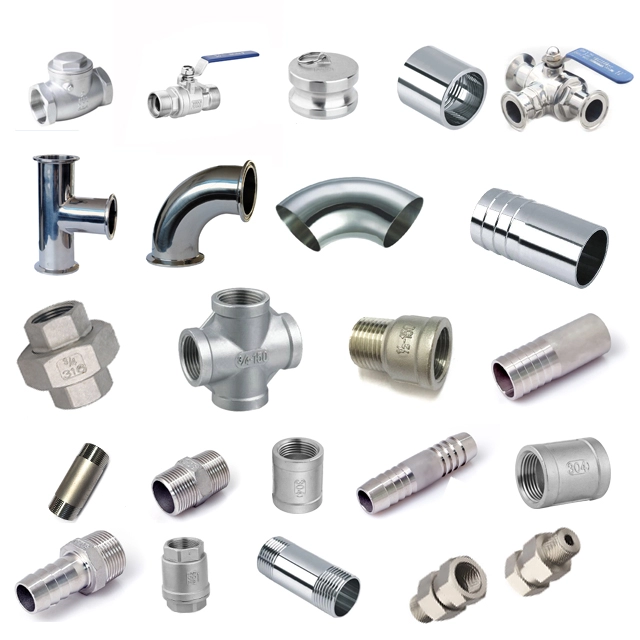The varieties of steel butt welded pipe fittings listed in the product standard include elbow, tee, cross, reducer, pipe cap, elbow, flanging nipple, branch pipe seat, etc.
Commonly used elbows are divided into 45 elbow, 90 elbow and 180 elbow according to their bending angle. In accordance
with the bending radius, it can be divided into long radius elbow (R≈1.5DN, that is, the bending radius is about 1.5 times of the nominal diameter) and short radius elbow (R≈1.0DN, that is, the bending radius is about 1 time of the nominal diameter); among them, there are also reducing elbows in 90 long radius elbows. In addition, bends with special angles, such as bends of 60°and 88°25 ", will be provided according to the needs of the piping direction.
Tee and cross are divided into equal diameter and reduced diameter, and the nozzle ends of equal diameter tee and cross are of the same size; the sizes of main pipes of reducing tee and cross are the same, while the sizes of branch pipes are smaller than those of main pipes. The reducer can be divided into concentric and eccentric, and the large-end diameter and small-end diameter of the concentric reducer are of the same axis; the large-end diameter and small-end diameter of eccentric reducer are two parallel axes, and one side of the small-end diameter is parallel to the outer edge of the large-end diameter.
Bends are ordered according to bending angle and bending radius. Generally, straight pipe sections are required at both ends of bends, and the bending radius is usually at least 2.5 ~ 3 times of the pipe outer diameter (r ≥ 2.5d ~ 3d).
